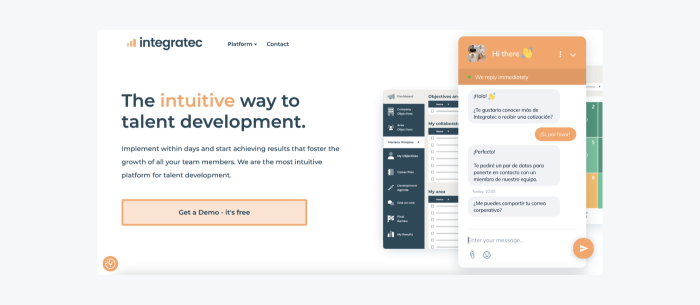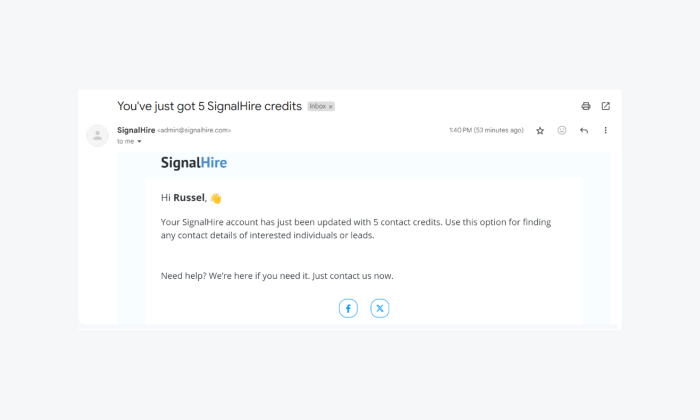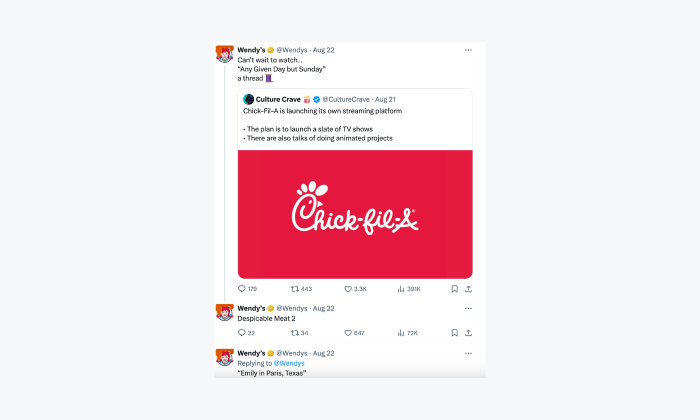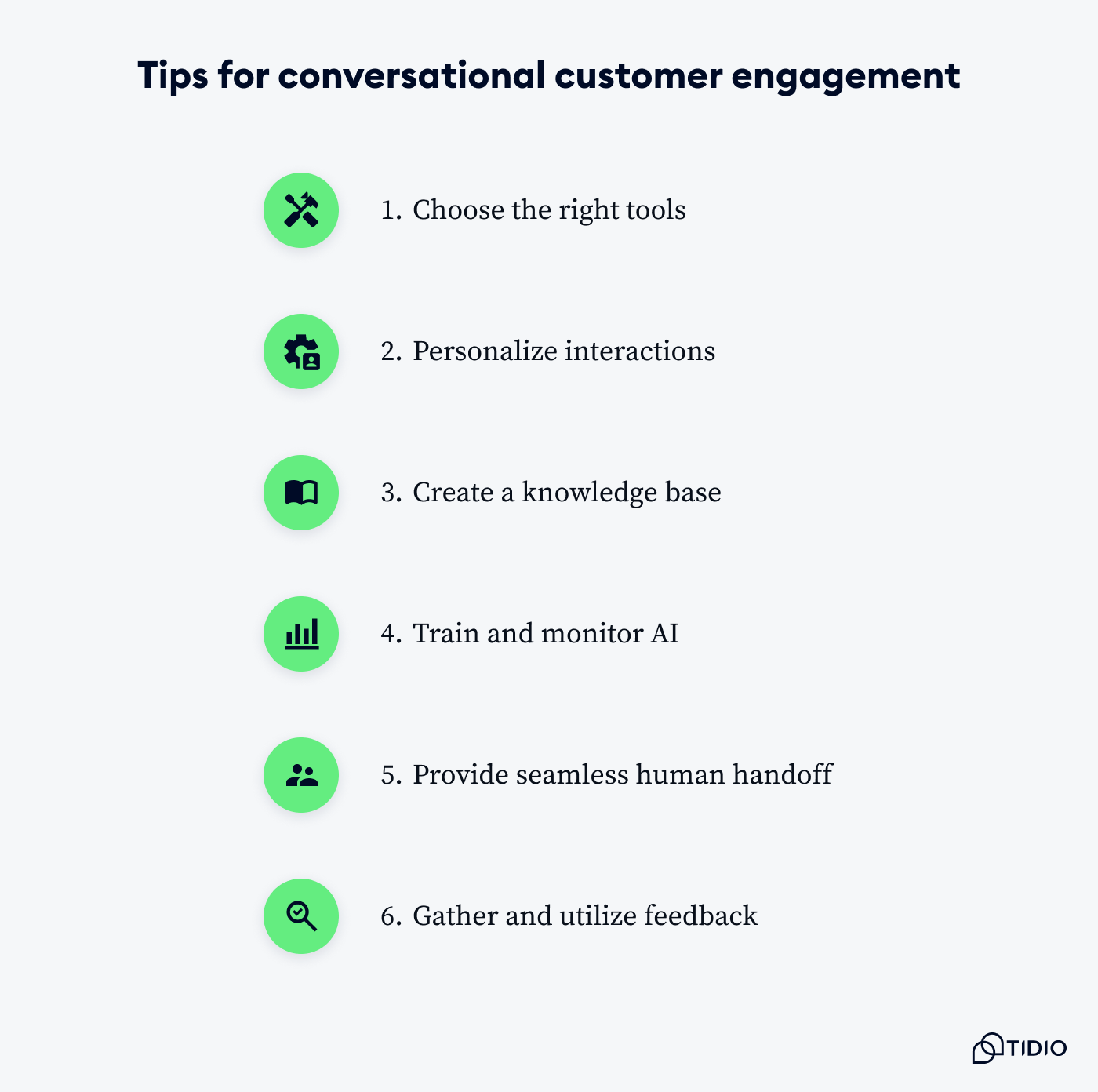First of all—
What is conversational support?
Conversational customer service uses real-time, dialogue-based tools like chatbots, live chat, and social media to provide support and engage customers. It offers personalized experiences using natural language.
A Gartner study shows that over 50% of companies track the financial benefits of their support strategies, leading to a rise in conversational platforms.
Let’s explore the benefits and implementation of this approach.
Improve customer service using chatbots
Let’s first go through the differences between traditional and conversational support.
Traditional vs. conversational customer service
Traditional customer service is still popular in today’s world. Representatives handle all requests manually through phone calls, emails, and other channels. But with 75% of customers using multiple channels of engagement, it creates a strain and challenge on manpower to effectively handle the volumes at scale.
And that’s where conversational customer service comes in. It uses natural language processing (NLP) and artificial intelligence (AI) technologies to interact and help customers without engaging your support team.
Here is a comparison table showcasing the main differences between the two strategies.
| Feature | Traditional customer service | Conversational customer service |
|---|---|---|
| Communication style | Uses pre-scripted and standardized replies | Utilizes conversational tone and natural language |
| Channels | Phone calls, emails, and SMS messaging | Social media, chatbots, and messaging platforms |
| Personalization | Mostly generic one-off interactions | Relational to build long-term relationships |
| Approach of engagement | Reactive approach to issues as they arise | Proactive approach anticipating client needs |
| Automation | Largely limited to solutions like automated voice response | Extensive use of automations and AI |
| Scalability | Scaling challenges and rising costs | Can handle unlimited number of simultaneous inquiries |
| Availability | Runs within business hours | 24/7 support |
| Experience | Long response times | Instant responses |
Now that we know the differences between the two, let’s have a quick look at the main pros of conversational service:
Benefits of conversational customer service
You can have the best product or service in the market, but it means nothing if customers find their shopping experience to be unpleasant. A smart way to meet the customer expectations is by investing in conversational customer service.
Some of its biggest benefits include:
Enhanced customer experience
Conversational AI and an interactive two-way communication provide personalized and round-the-clock support, boosting customer satisfaction. Interestingly, according to a study, 83% of employees fully support AI’s decision-making abilities once it’s integrated into the workplace.
Read more: Discover how Gecko Hospitality reached 90% customer service automation using Tidio.
Increased efficiency
Utilizing multiple communication channels, such as SMS, WhatsApp, web chats and employing AI assistants, boosts efficiency and allows human staff to focus on pressing issues. According to Deloitte, AI assistants significantly enhance efficiency. On top of that, customer service automations let your human staff focus on the most important and pressing issues.
Valuable insights and analytics
Interactions such as customer queries or feedback within the conversational CRM generate data. The NLP and ML algorithms learn based on customer sentiments as well as preferences to then showcase this data to your team. When analyzed, this data helps businesses point out key issues, pain points and FAQ. A clear understanding of your customers means you can develop better targeted campaigns.
Read more: Discover the top chatbot analytics and learn the metrics you should be tracking.
So, what are the main channels for conversational customer experience? Let’s jump into that.
Conversational customer service channels
Millennials and Gen Z prefer using digital channels over traditional email, as they find the instant, conversational aspect convenient. However, the older generations still want to contact a human representative. So, make sure your business captures the market in totality with an omnichannel, hybrid approach.
Here are the available customer service channels you can use:
Live chat
Customers view live chat software available on brand’s app and website as a convenient way to interact with support agents and resolve issues. And support agents can handle multiple chats at once and use canned responses for frequently recurring customer questions.
This will ensure consistent brand messaging as well as quicker response times. Inquiries can also be routed to the most suited agent using a help desk management system. Finally, your service team can access customer history and past interactions for more personalized support.

A good example of a brand using this channel is eye-oo. The company implemented live chat on the website to interact with customers in real-time and boost their engagement with the brand. As a result, the company decreased wait times by 86% while boosting sales and revenue.
Read more: Learn more about the benefits of live chat. Also, see how Tidio helped eye-oo improve customer service experience.
Chatbots
You should add conversational assistants to your tech stack as they streamline customer service by automating quick responses and improving workflows. Today, most intelligent virtual assistants are powered by AI, ML, and NLP algorithms to accurately interpret inquiries.
Conversational AI can access user data including purchase history, past conversations, and preferences to deliver personalized responses. They also have multilingual features to communicate with customers worldwide, not to mention the integration capability with other CRM systems, ecommerce platforms, and business tools.

One of the real life examples is Integratec. This talent development platform uses chatbots to collect leads and provide 24/7 customer support. On top of that, chatbots helped the company improve tracking of requests and utilize a user-friendly interface that visitors enjoy.
Read more: Check out the full case study on how Integratec used Tidio AI chatbot to boost its qualified leads.
Use chatbots to boost your conversational customer service
Phone
Phone support and call centers are essential because they allow agents to understand customers’ emotions, leading to genuine human connections. Like other communication methods, calls are often recorded for quality assurance and compliance. And recently, companies have begun using AI voice assistants to manage routine queries and direct more complicated issues to human agents.
For instance, PBX Operators at Golden Nugget automated 34% of reservation calls by implementing an AI voice assist. The virtual assistant was important to keep the quality of service consistent and cut response times as customers prefer to reach the brand via phone call to make reservations, cancellations, or seek general information.
SMS and messaging channels
SMS is a powerful two-way conversational channel that can help you build, grow, and maintain good customer relationships. Leading brands use this channel to reduce the cart abandonment rate, get customer feedback, confirm appointments, and order deliveries.

One of these businesses is Atlantic Golf Course. It interacts with customers through text to schedule golf reservations. While at times an employee might be on the other side, the integration of artificial intelligence and machine learning alongside scheduling software keeps the customer conversations flowing naturally.
Email support has been the bedrock of customer service for many years. While it might be slower than other real-time communication channels, it has its irreplaceable uses. First, it’s best suited for responding to more detailed and complex issues. Secondly, it leaves a conversation thread that can be referenced later for context. Finally, emails allow the responder to personalize their answers.

An example of a brand using email in its communication is Signalhire, a cloud recruiting and HR analytics software. Displayed is a promo email looking to incentivize further engagement. A response to this email automatically generates a customer ticket and initiates further engagement with a support rep.
Social media
Conversational AI customer service done via social media involves the brand engaging its followers on direct messaging, replying to comments, and responding to story reactions. Some of the platforms you can use include Facebook Messenger, Instagram, X, Linkedin, TikTok, WeChat, Snapchat, and others. And with over 4.9 billion people using social media globally, this is a great opportunity to gain some more brand visibility.

For example, Wendy’s stands out for its sassy social media presence on X. If they’re not replying to customers’ tweets, they’re sharing brand-related posts or showcasing cool offers. Wendy’s has mastered how to relate to its audience through playful wit and humor, targeting both customers and competitors.
Okay, now you know which channels you can use for your conversational customer support. Let’s take a look at some of the best practices to make your strategy successful.
Tips and best practices for conversational customer engagement
Implementing conversational customer service tools alone is not enough. To get it right, you must adopt a variety of approaches and make it part of a larger customer service strategy. Let’s look at some of the best practices when going about this.

1. Choose the right tools
Selecting the right software is crucial for conversational customer service, directly affecting efficiency and customer satisfaction. Consider your business needs, budget, and scalability when choosing a platform
Look for features like natural language processing and multichannel support. By equipping your team with the right tools, you empower them to provide timely and effective support that keeps customers coming back.
Read more: Discover the best AI customer service companies and choose the right one for your business.
2. Personalize interactions
Tailoring interactions to individual customers enhances their experience and builds loyalty. Starbucks excels at this by using its app to track customer preferences and order history, allowing baristas to greet regulars by name and suggest their favorite drinks.
Train your team to listen actively and use customer data to offer personalized recommendations. Balancing automation with a human touch helps create memorable interactions, ensuring customers feel valued and understood.
3. Create a knowledge base
A comprehensive knowledge base is a valuable resource for both customers and support teams. Apple utilizes a well-organized online support center where users can find FAQs, troubleshooting guides, and community forums.
This customer self-service option encourages clients to resolve issues independently while providing agents with quick access to information. Structure content logically and include multimedia elements to build an effective knowledge base. Regularly update it based on user feedback to keep it relevant and helpful.
Read more: Check out our in-depth guide about knowledge base chatbots.
4. Train and monitor AI
Training AI for customer service is essential for understanding customer needs. IBM employs AI chatbots that learn from diverse datasets, including chat logs and support tickets, to improve their responses.
Implement a continuous learning process to keep the AI updated with new interactions. Use supervised learning techniques where human agents review and refine AI responses. Regular testing and accuracy assessments ensure the AI remains effective in assisting customers.
5. Provide seamless human handoff
A smooth transition from AI to human support is vital for customer satisfaction. Sephora has mastered this by programming its chatbots to recognize when issues require human intervention. When a customer requests help, agents can access the entire conversation history, eliminating the need for customers to repeat themselves. This seamless handoff reduces frustration and enhances the overall customer experience.
6. Gather and utilize feedback
Feedback is essential for improving customer service. Amazon effectively gathers insights through post-interaction surveys and product reviews, allowing them to identify strengths and weaknesses in their service. Multiple collection methods, such as email questionnaires and in-app feedback, are used to maximize responses.
Analyze the data to spot trends and share insights across teams. Acting on feedback helps refine chatbot responses and improve agent training, ultimately enhancing customer satisfaction.
Conversational customer service: key takeaway
Conversational customer service represents a significant evolution from traditional support models, offering a more dynamic, personalized, and efficient approach to customer interactions.
Unlike traditional methods that rely on scripted responses and rigid processes, conversational customer service leverages technology to provide fluid, context-aware support. It also provides service across various channels including live chat, chatbots, phone, messaging apps, email, and social media.
This shift brings numerous benefits, such as 24/7 availability, faster resolution times, personalized experiences, and the ability to handle multiple queries simultaneously. And to maximize the potential of conversational support, you should implement these best practices:
- Choose the right tools
- Personalize interactions
- Create a knowledge base
- Train and monitor AI
- Provide seamless handoff
- Gather and utilize feedback
The future of customer service lies in striking the right balance between AI-powered efficiency and human empathy. And to be on top of the trends, you should get there early.
Why not start today?
Use conversational customer service for your business

